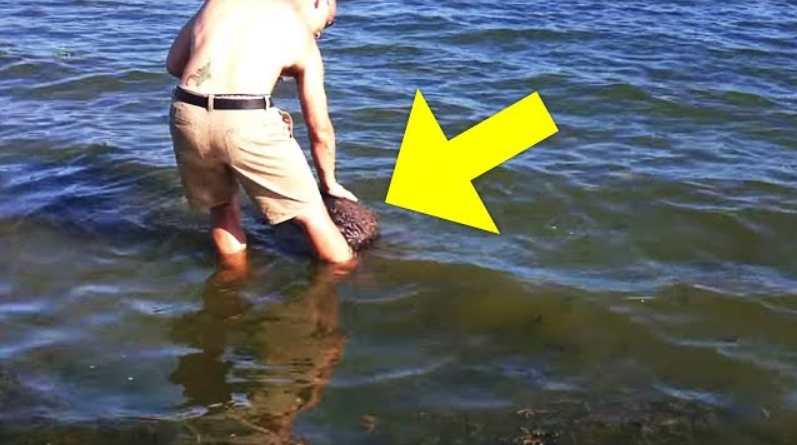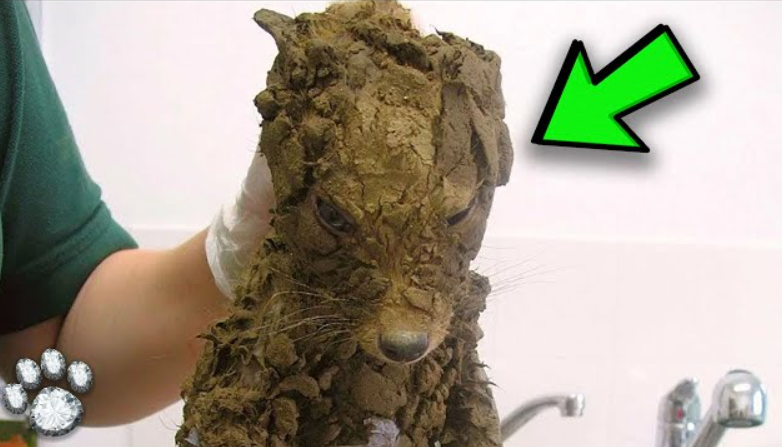
The man stood on the shore watching a sea creature that was moving too quickly. It soon made its way to the shallows, so he waded into the water hoping to get a better view. Unexpectedly, the creature came closer and touched his feet.

On August 10, 2014, a YouTuber named Allisonmoo uploaded an impressive video on social media. She captured a wild sea animal swimming just offshore, which seemed surprisingly interested in what was happening on the beach.
As the creature moved closer to the shore, Allisonmoo followed its journey on camera. The animal was a powerful swimmer and soon made its way to the beach, where a group of people were waiting with their cameras. One person ventured out for a closer look when the animal approached him first.
The creature rolled over like a dog expecting a belly rub, which surprised the beachgoers. The camerawoman exclaimed, “Look, it’s rolling around in the water!” and watched as it swam right up to the man paddling in the shallows and bumped up against his legs. Despite being so close, the creature seemed unnerved as the man reached out to pet it. The animal was a sea otter, and it brought more people from across the beach who wanted to see it up close.
The otter seemed very comfortable in the presence of people and allowed its human playmate to pet him. It even tried to clamber up the man’s leg and gave him a couple of playful nips. However, the otter got a little over-enthusiastic in its play, and one little nibble caused the man to yelp. One of the bystanders voiced his concern about the otter’s power and potential to cause harm.
After investigating the man’s foot, the otter decided that playtime was over and headed back out to sea. It floated on its back as if to say goodbye to its new friend before continuing on its journey.
The video of this amazing encounter became viral, reaching over 2,900 views and over 3,000 likes to date. Some viewers agreed that they would do exactly as the man did, while others insisted that a more cautious approach to otters was needed. Experts seem to agree that it’s best to record wild animals in their habitat rather than petting them.
The Vancouver Aquarium’s marine mammal expert – Tessa Danelesko – told GrindTV in August 2014 that people should keep a safe distance from wild animals. “Getting close to otters and other marine mammals is dangerous for a number of reasons,” she said.
“They can behave unpredictably.” “This poses a safety risk if they use their natural defense mechanisms like teeth or claws,” continued Danelesko. In fact, those very same weapons are powerful enough to crush shellfish, and so they’re more than capable of taking fingers or toes.
“Animals can also transmit diseases to people through close contact,” Danelesko explained. And although sea otter encounters like the one on the beach used to be rare, Danelesko said that they’re becoming more common. Apparently, hunting initially made the otters endangered and fearful of humans.
Sea otters are becoming increasingly curious and venturing closer to humans as their population grows. While friendly interactions with humans can be pleasant, it could be detrimental to the species if they become too comfortable around people.
Some humans may not be as gentle as others, and sea otters could become an annoyance to people if their population continues to increase. If they are deemed a nuisance, they may have to be moved or even killed to keep their numbers down.
It is best to keep a safe distance and respect animals when in their habitat or sharing it If you encounter a sea otter that appears to be in distress, contact animal welfare to ensure that they remain wild and free.




